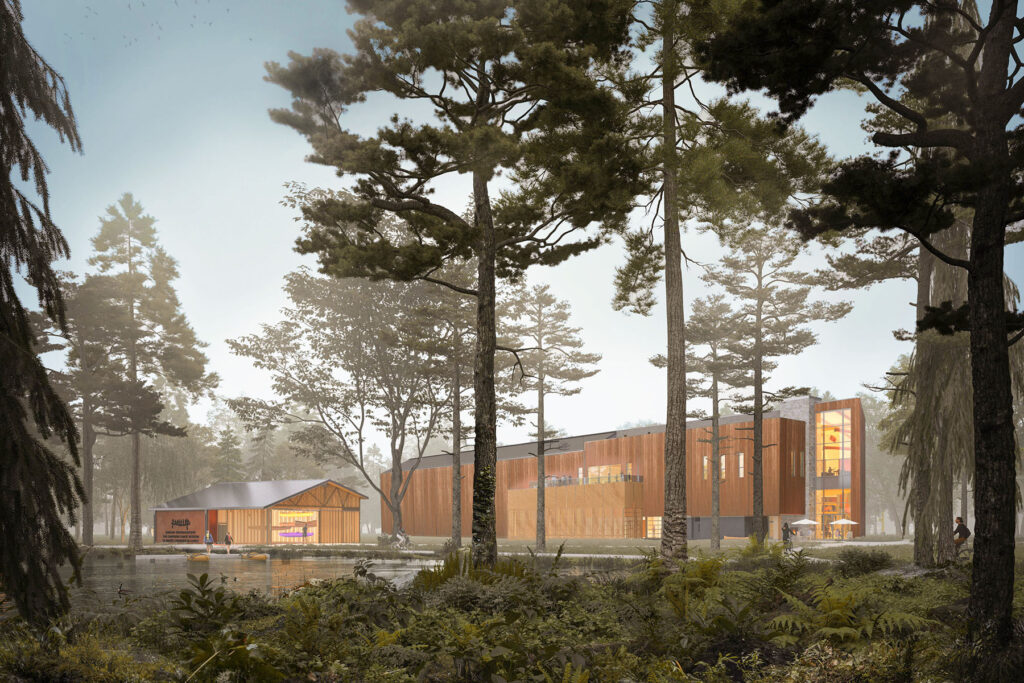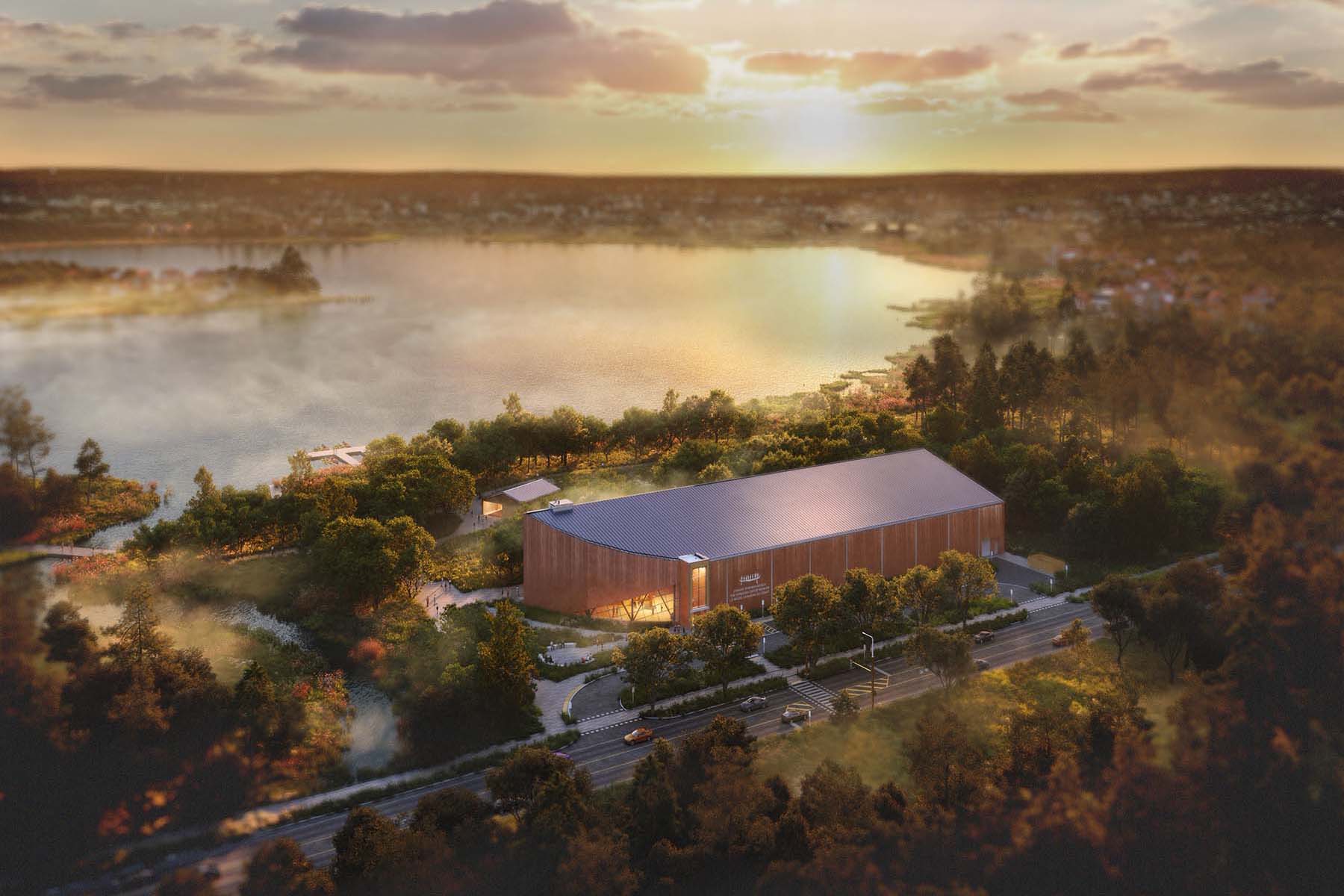Our Journey
The Canadian Canoe Museum, located on the Traditional Territory of the Williams Treaties First Nations in Peterborough, Ontario, has stewarded, for the last 27 years, the world’s largest and most significant collection of canoes, kayaks and paddled watercraft. More than 600 in number, these watercraft and their stories have a pivotal role to play in understanding our past and our collective future.
From the Exhibition Hall to the Lakefront Campus, we offer a variety of ways to connect with the land, water, and canoe, whether you are an avid paddler, history buff, or an adventurous family!
Founded on a collection of the late Professor Kirk Wipper and established in Peterborough, Ontario, in 1997, the Museum’s holdings now number more than 600 canoes, kayaks and paddled watercraft. Together they span the country from coast to coast to coast and represent many of the major watercraft traditions of Canada. In 2013, the Senate declared The Canadian Canoe Museum and its collection a cultural asset of national significance.
The Museum’s artifacts range from the great dugouts of the First Nations of the Pacific Northwest to the singular bark canoes of the Beothuk of Newfoundland; from the skin-on-frame kayaks of northern peoples from Baffin Island in the east to the Mackenzie River Delta in the northwest to the all-wood and canvas-covered craft manufactured by companies with names like Herald, Peterborough, Chestnut, Lakefield and Canadian. Over the years, paddled watercraft from as far away as Samoa and Kenya have helped the Museum expand its reach and scope to include international examples.
The Canadian Canoe Museum is a private, not-for-profit organization with charitable status (our Charitable Registration Number is 13378 1039 RR0001).

Our Logo

The Canadian Canoe Museum has been working closely with Michi Saagiig Nishnaabeg knowledge holders to translate the Museum’s name into Anishnaabemowin, the language of the territory, lands and waters on which the Museum is situated.
In Anishnaabemowin, “Jiimaan Kinomaagewin” translates to “Canoe Place of Learning for All.” Our new trilingual name is now featured on the building. Anishnaabemowin has also been incorporated into our logo, which was refreshed in 2023 to reflect our next chapter at the water’s edge.
The Canadian Canoe Museum’s logo pays tribute to the pictograph (mazinaawbikinigin) that inspired the Museum’s original logo, which is located on a rock face at Pictured Lake within the traditional territory of Fort William First Nations. When Kirk Wipper, founder of the collection, borrowed this iconic image from a book by anthropologist Selwyn Dewdney (whose birch bark canoe is in the Museum’s collection), he did so to signal the importance of the deep Indigenous roots of canoes and canoeing in Canada.
It was only in 2015, encouraged by friends in First Nation communities with canoes in the Museum’s collection, that we started making treks to the rocks to start building a more personal relationship with the site and with the people for whom this sacred place is home.
Our new logo features a rock face icon with a ridged top inspired by the Canadian Shield and waves or snow drifts along the bottom, with the pictograph in the middle.
This design honours the relationship between the Museum, the original pictograph, and the territory on which it lives, as well as the canoe’s Indigenous origins. It is also a visual representation of the Museum’s vision to connect people to the land, water, canoe, and each other.
We look forward to more annual visits and continuing to build our relationship with the keepers of the rocks at Pictured Lake through continued conversations with Fort William First Nation.
Our New Building: A Design Inspired by the Canoe
The new museum’s architecture is inspired by craftsmanship, and the use of natural elements reflects a connection to the land and the artisanship of canoe building. Our new home for the collection is as innovative as the canoe itself!

Award-Winning Architects
Award-winning local architectural firm Unity Design Studio (formerly Lett Architects Inc.) assisted The Canadian Canoe Museum in realizing a creative vision for our waterfront home and campus.
Unity Design Studio is a full-service architectural design studio known across the province as a leader in innovative design and long-lasting client relationships. Unity has developed best-in-class expertise in serving the cultural and non-profit sectors in Ontario with designs built upon deep stakeholder engagement.
Unity Design Studio is the only B-Corp certified architecture firm in Canada. Certified B Corporations™ (B Corps™) are for-profit companies that use the power of business to build a more inclusive and sustainable economy. They meet the highest verified standards of social and environmental performance, transparency, and accountability.
Purpose-Built Design
The Museum’s two-storey, 65,000-square-foot building is a purpose-built facility that houses the collection and activities, helping to preserve history through the display, restoration, and appreciation of the canoe.
Our five-acre site provides stunning west-facing views of Little Lake, a connection to the Trans Canada Trail and is surrounded by public parks. It will become a vibrant community space for activities and the Museum’s canoeing and outdoor programs and events.
The new museum also features:
- An integrated Collection Hall that allows for the display of 100 per cent of the Museum’s watercraft in a Class “A” Museum Environmental Control environment, an artifact conservation standard.
- A 20,000-square-foot Exhibition Hall featuring a brand-new suite of exhibits.
- A Gathering Space for events, weddings, and educational programs featuring a sweeping view of the lake.
- An authentic Artisan Studio and Canoe-Building Studio to facilitate hands-on learning for youth and adults alike.
- An accessible Library and Research Room with Class “A” Museum Environmental Control standards archival storage.
- A Cafe with a fireplace and adjacent Lakefront Terrace.
- A Canoe House and floating docks to accommodate on-water and outdoor education programming.
- Trilingual wayfinding and exhibit signage.
Class “A” Controlled Museum Environment
The new museum has been carefully developed through consultation with the Canadian Conservation Institute and national experts to meet ASHRAE Museums, Galleries and Archives Chapter Class “A” Environmental Standards that minimize the risk or degradation of the precious artifacts in its care and to ensure their well-being for generations to come.






